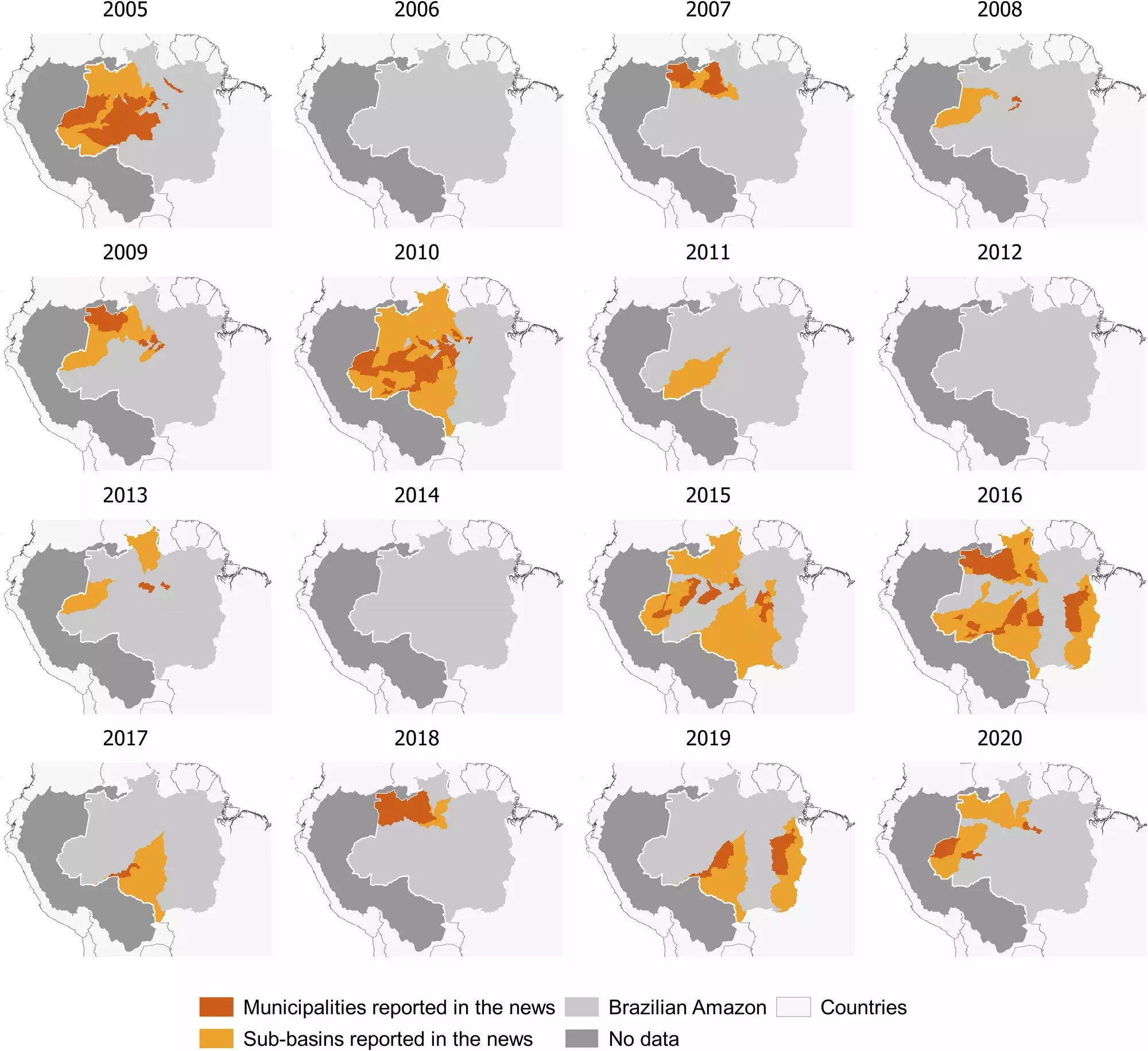In the heart of the Amazon basin, a silent crisis is unfolding that demands urgent attention. Over the past two decades, severe droughts have increasingly gripped this vital region, extending low water levels to approximately 100 days—nearly 30 days longer than historical averages. This alarming trend is not just an environmental statistic; it represents a profound threat to the livelihoods of local communities, revealing a dire intersection of climate change and human existence. According to a study conducted by the Institute of Environmental Science and Technology at the Universitat Autònoma de Barcelona (ICTA-UAB), the ramifications of these prolonged droughts are far-reaching, pushing entire populations toward the brink of isolation.
Communities at Risk
Imagine living in a land where your primary mode of transport is a boat, reliant on navigable rivers and wetlands. For many Amazonian residents, this is their reality. The study reveals that nearly half of non-Indigenous communities and over 54% of Indigenous villages in the Brazilian section of the Amazon face the chilling threat of becoming hermetically sealed during drought conditions. These communities are not just fighting the elements; they are grappling with profound social inequalities and limited access to necessary resources. As essential services like healthcare and education become increasingly out of reach, the implications are disastrous. The systemic neglect of these communities highlights a glaring disconnect between urban centers and rural populations, accentuating the need for a comprehensive understanding of displacement through drought.
The Economic and Social Catastrophe
The repercussions of extended drought periods extend beyond immediate transport woes. As the waterways dwindle, so too does the availability of goods and services. Communities that once thrived on trade and resources from their rivers are besieged by scarcity—fishing and hunting grounds diminish, leading to diminished food security. A cycle of deprivation ensues, whereby the most vulnerable populations bear the brunt of environmental changes, their resilience tested by each passing drought. The findings from this study reveal an unsettling truth; the very ecosystems that support these communities are inextricably linked to their survival. Prolonged periods of drought do not merely challenge the local economy—they fundamentally threaten the fabric of Amazonian life.
Analyzing Government Response
Dr. Letícia Santos de Lima, a researcher at ICTA-UAB and the study’s lead author, emphasizes critical deficiencies in governmental responses to this escalating crisis. Often, strategies deployed are reactive rather than proactive, providing only temporary relief rather than fostering long-term adaptive solutions. The research indicates that addressing the isolation of these communities through the enhancement of road networks will likely exacerbate the problems at hand. Roads have historically been a driver for deforestation, contributing to shifts in rainfall patterns and increased sedimentation in rivers, further impairing navigability. This modus operandi must be re-evaluated in light of the pressing need for sustainable development.
A Multi-faceted Approach to Solution
The researchers adopted an interdisciplinary framework, combining spatial analysis and hydrologic models with content analysis of media reports to illuminate the interconnected impacts of drought on Amazonian communities. This multifaceted approach is vital in painting a comprehensive picture of the crisis. Accurate data can guide policymakers in implementing targeted interventions that respect both the ecological integrity of the Amazon and the rights of its inhabitants.
Urgency for Policy Change
The demand for urgent and informed policy responses is clearer than ever. The Amazon basin is undergoing a monumental transformation, underscored by unpredictable weather patterns and the looming threat of climate change. Scientists have long voiced these concerns, making it imperative that action follows awareness. As we witness the ramifications of historically unprecedented droughts manifest into a crisis for both ecosystems and human populations, there lies both an ethical and practical imperative to act. Protecting the Amazon may no longer be merely an environmental concern—it has become a matter of social justice and human rights.
In confronting this crisis, policymakers must prioritize adaptive strategies that bolster community resilience while ensuring the preservation of one of the Earth’s most irreplaceable ecosystems. The continuity of life in the Amazon is at stake, and only through concerted, innovative action can we hope to address the challenges posed by these dire environmental shifts.

